What is a sustainable mattress and how do you spot one?
Eco mattresses are made with natural materials and sustainable practices to reduce their impact on the environment
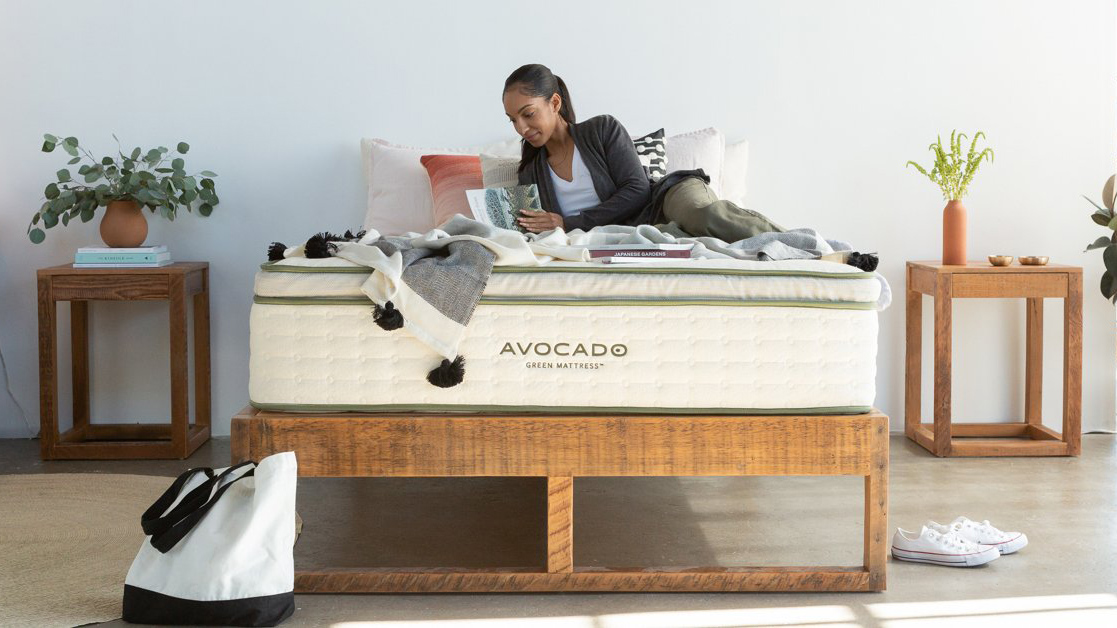
With more and more shoppers looking to reduce their carbon footprint and their impact on the environment, it's only natural to wonder whether investing in a sustainable bed should be the next step. Mattress production can be wasteful and use a huge amount of energy and resources, making many unsustainable, which is why switching to a natural, eco mattress is a good idea.
Many of this year's best mattresses for all sleepers opt for more sustainable, natural materials like wools, cottons and latex, as well as ensuring their production practices are sustainable and ethical. Certifications like Eco-INTITUT, GOTS and GOLS and 1% for the Planet ensure companies adhere to sustainable practices, but what actually makes a mattress sustainable?
We're going to take a look into what a sustainable mattress is, how much they cost, what they're made of and the certifications you can expect to see. While sustainable mattresses often come with a premium price tag, this month's mattress sales mean you can pick up a high-quality eco mattress for less.
What is a sustainable mattress?
A sustainable mattress is a bed that uses more natural and often organic materials, rather than man-made materials from finite resources, and has a production process that minimizes its impact on the environment. This can include practices like:
- Reusing materials
- Ensuring mattresses are recyclable
- Making mattresses to order to minimize waste
- Only delivering within a certain radius to prevent harmful transport emissions
- Hand crafting mattresses rather than high-energy consuming factory processes
- Off-setting the company’s carbon footprint
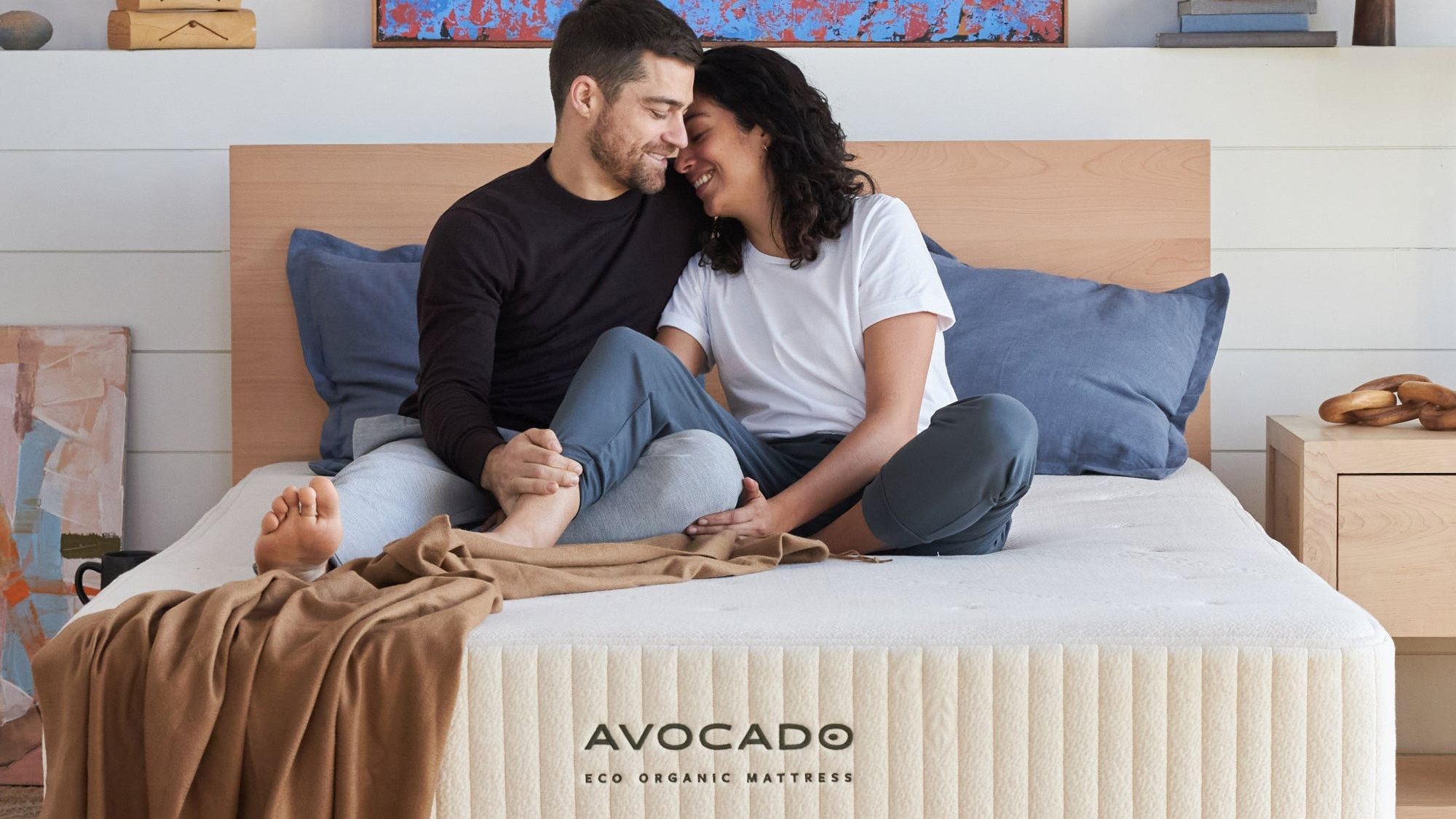
Some sustainable mattresses and the best organic mattresses manage to achieve a carbon neutral status, meaning their impact on the environment is extremely minimal. Others incorporate some of the practices above, but not all of them, to greatly reduce their impact.
How much do sustainable mattresses cost?
Sustainable production practices and materials often cost businesses more than cheaper alternatives. The higher quality the bed, the more premium the price tag. So, as you can imagine, sustainable mattresses are usually at a higher price point than traditional mattresses.
This doesn’t mean that all sustainable beds are expensive. On average, a queen size sustainable mattress can range anywhere between $800 to over $3,500, so there should be a suitable option for most budgets. However, most of the options in our best cheap mattress guide don't prioritize sustainability, so it's worth investing a little more if you can for an eco option.
For example, the mattress brand Awara boasts plenty of certifications proving their dedication to the environment and sustainability, and its indulgent Awara Natural Luxury Hybrid mattress is just $849 for a queen. On the other end of the scale, the up-market Essentia Stratami organic mattress has a much steeper price tag of $3,850 for a queen.
Sustainability certifications in mattresses
Mattress certifications are there to provide shoppers with more information about the production processes and materials used in mattresses. They aim to provide transparency to consumers about the safety, ethics and sustainability of a mattress to help inform their choices. There are some certifications that indicate a mattress is a sustainable option, some of the most common include the following.
Carbon Neutral
Carbon Neutral is a non-profit organization that assesses companies’ carbon emissions. If a brand achieves the Carbon Neutral certification, it means that at the end of the production process of a new mattress, there is no net release of carbon dioxide into the atmosphere.
This is usually achieved through official carbon off-setting as well as reducing carbon emissions throughout the production process.
GOTS and GOLS
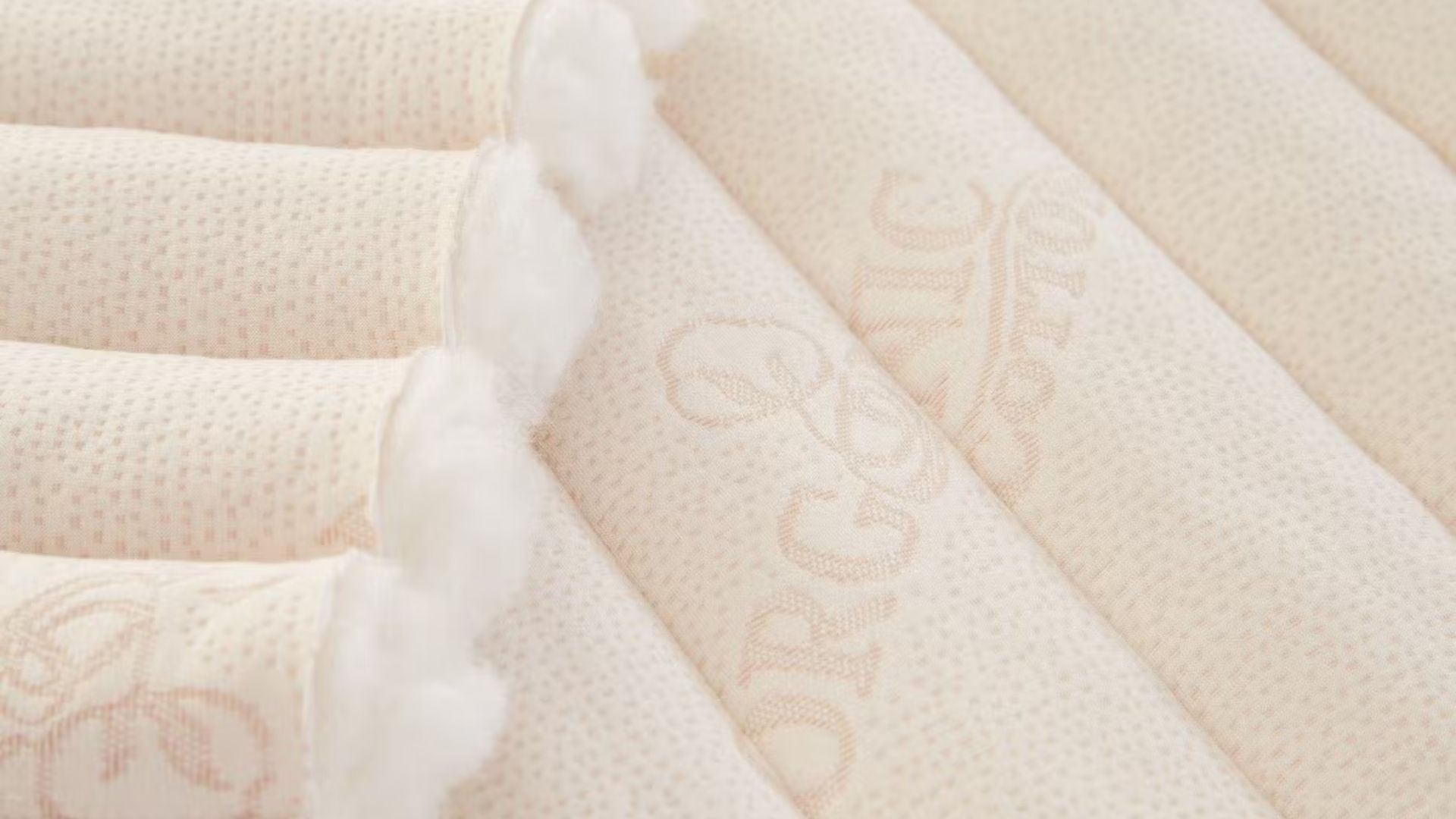
GOTS and GOLS stand for Global Organic Textile Standard and Global Organic Latex Standard. These organizations ensure materials won’t contain toxic chemicals or man-made products, like pesticides or fertilizers, and they will have been sustainably harvested and sourced.
If a mattress contains cotton, wool or latex, it’s important to ensure they have the GOTS or GOLS certifications. This will mean the brand prioritizes ethical practices, as well as sustainability.
1% for the Planet
If a brand is 1% for the Planet certified it means they donate 1% of their annual sales to environmental organizations.
They will be committed to donating annually to a list of approved organizations that work to reduce climate change and protect the environment. Our number one rated organic mattress, the Avocado Green, is certified 1% for the Planet.
Eco-INTITUT
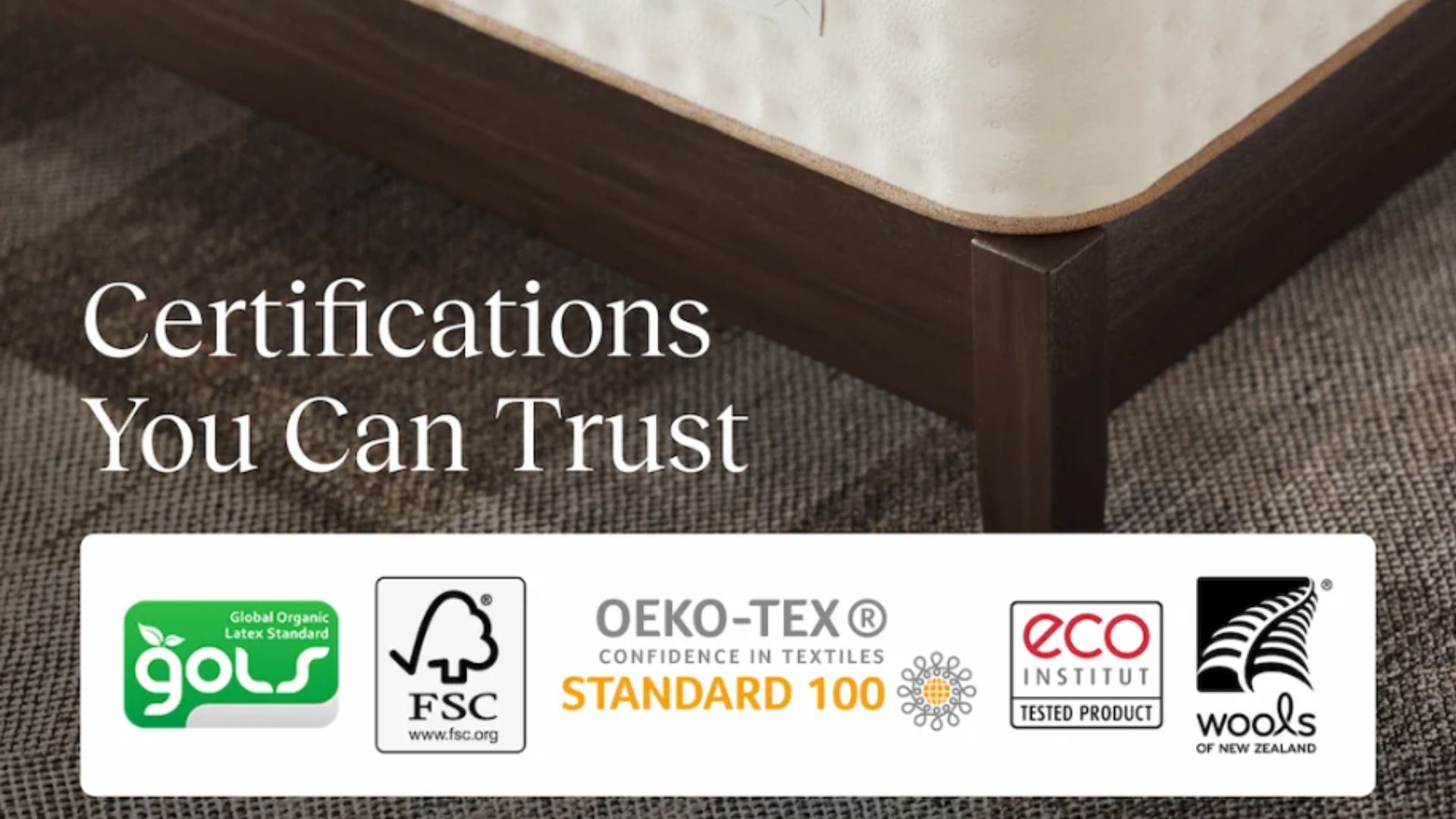
If a mattress has an Eco-INSTITUT certification, it means that it has been tested and approved as low emissions and as a low-pollutant. To be certified, brands have to provide all of the materials used in the mattress, so they can be laboratory tested for emissions, odors and harmful content.
This keeps mattress brands accountable for the sustainability of all materials, rather than just the finished product or the production process.
What are sustainable mattresses made of?
Sustainable mattresses use natural and plant-based materials, rather than toxic, chemical-based man-made materials like some polyfoams. Even the best memory foam mattresses aren't always sustainable because of the production process for foams. The best hybrid mattresses often combine natural materials with recyclable steel springs, making them more sustainable. Common materials in sustainable mattresses include:
Wool is often used as a natural, moisture-wicking alternative to synthetic padding. GOTS certified wool means that the material is certified organic, so the farmers and the animals have been treated well and the entire production process is sustainable and ethical. It’s often used in top-layers of mattresses to keep sleepers fresh while also offering cushioning comfort around key pressure points.
Cotton is naturally breathable and soft, making it the perfect sustainable material for mattress covers. It helps keep sleepers cool, and when it’s GOTS certified, it’s a sustainable resource.
Natural latex is a plant-based material that is incredibly supportive when used in mattresses. It’s a great alternative to memory foam, offering cradling support that is responsive to a sleeper’s movement. GOLS certifications ensure the latex is sustainably and ethically sourced.
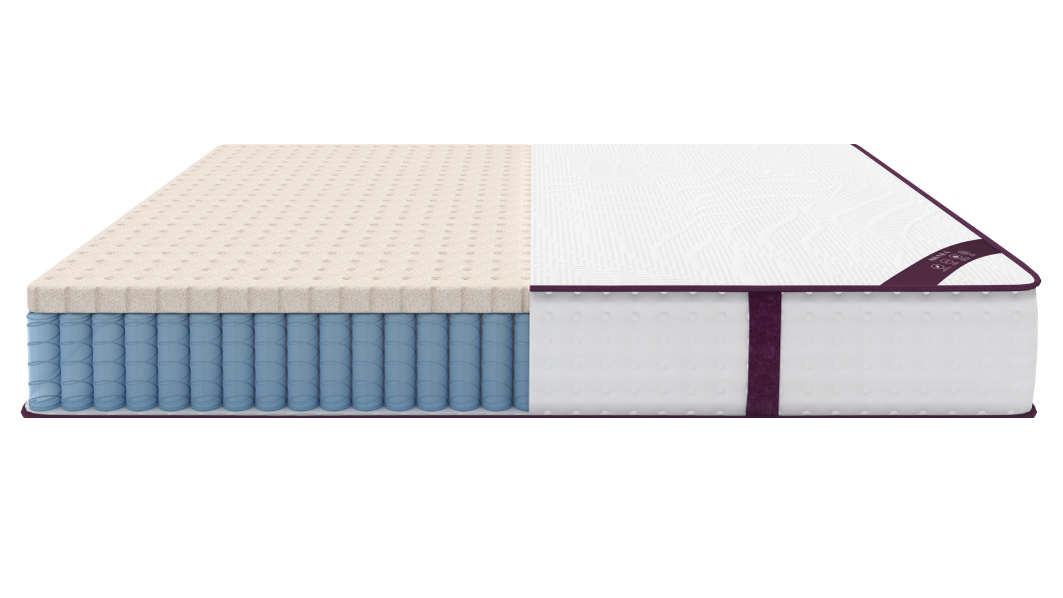
How long do sustainable mattresses last?
Because sustainable mattresses use natural materials, they often last a lot longer than cheaper man-made alternatives. Most mattresses have a lifespan of between seven and 10 years, which is why warranties usually cover you for any damages or faults for 10 years.
However, sustainable and organic mattresses, especially those that use latex, often offer warranties of 25 years, and can even provide lifetime warranties, as some are expected to last between 15-20 years.
Sign up to get the BEST of Tom's Guide direct to your inbox.
Get instant access to breaking news, the hottest reviews, great deals and helpful tips.

Lauren is an experienced writer and editor in the health and lifestyle industry and has led many campaigns and projects that deliver news, advice, and research on all things sleep. As the Sleep Features Editor for Tom’s Guide, Lauren writes, commissions and edits sleep and mattress content, from in-depth how-tos in sleep and mattress health to interviews with doctors and neuroscientists on the latest news in sleep. Lauren regularly tests new sleep tech and accessories to evaluate their effectiveness for getting good quality sleep and easing specific sleep struggles like nighttime anxiety. Alongside this, Lauren reports on the best mattress brands out there, like Helix, Saatva, and DreamCloud, helping readers find the right mattress for them and the best deals on them.
